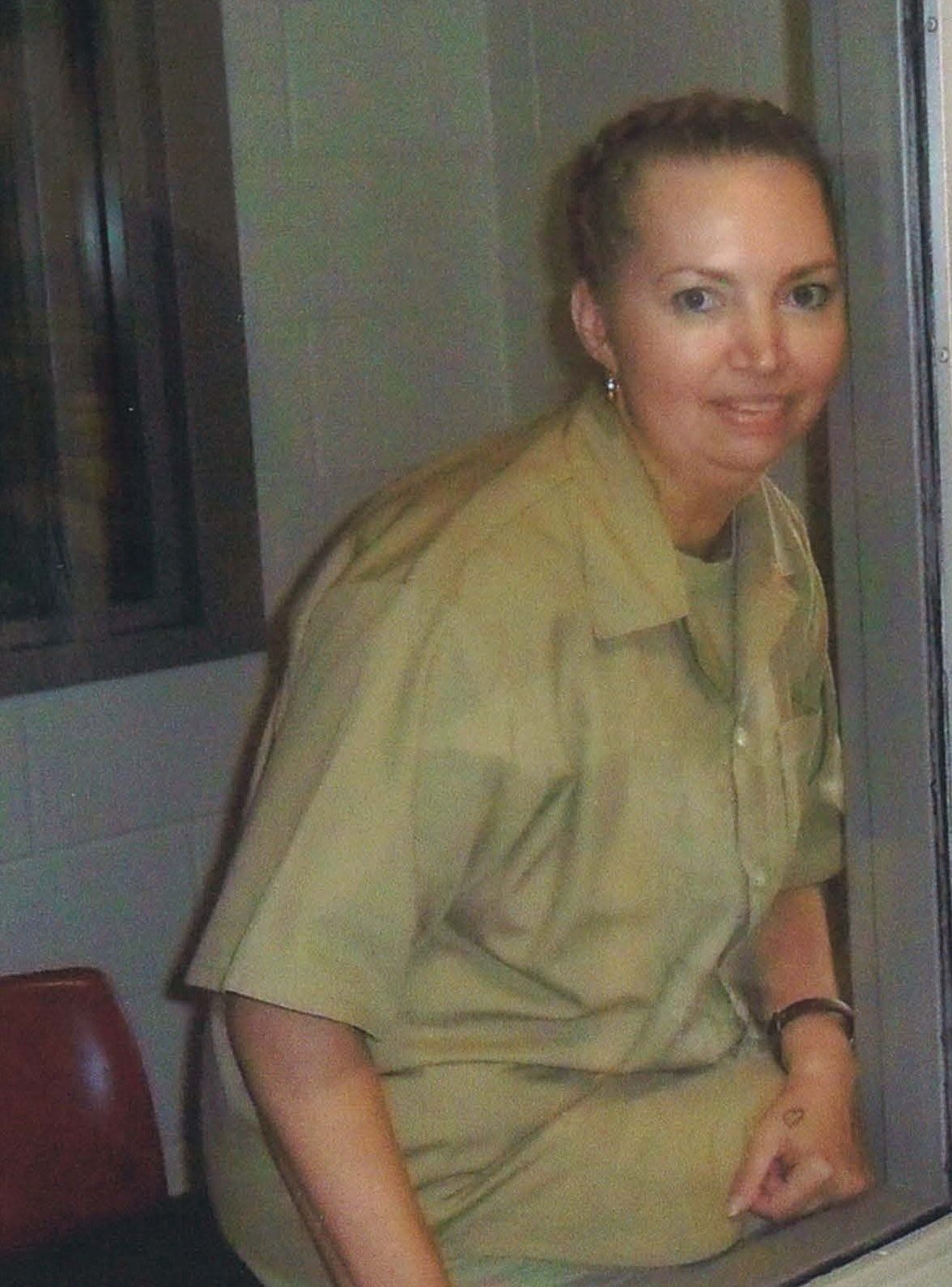
The Trump administration executed Lisa Montgomery early Wednesday morning, marking the first federal execution of a woman in 68 years. Montgomery, the 11th civilian to be executed by the federal government since the Justice Department resumed executions in July 2020 after a 17-year hiatus, was pronounced dead at 1:31 a.m. on Jan. 13 at the Federal Correctional Complex in Terre Haute, Ind.
Montgomery, 52, had been the only woman on federal death row since 2008, after she was found guilty of kidnapping 23-year-old Bobbie Jo Stinnett, who was eight months pregnant, killing her and kidnapping her unborn baby.
Her execution had been decried by advocates and mired in legal controversy. It was allowed to proceed late Tuesday night after the Supreme Court reversed several stays issued by lower courts, including a stay from the 7th Circuit on the grounds that she had a right to a hearing on her mental state—the Supreme Court has long held that executing the “insane” violates constitutional protections against cruel and unusual punishment—as well as stays on separate legal issues in the Eighth Circuit and the D.C. Circuit. Justices Breyer, Kagan and Sotomayor dissented.
“The craven bloodlust of a failed administration was on full display tonight,” Montgomery’s attorney Kelley Henry said in a statement Tuesday night. “Everyone who participated in the execution of Lisa Montgomery should feel shame… Our Constitution forbids the execution of a person who is unable to rationally understand her execution. The current administration knows this. And they killed her anyway.”
Since a date for Montgomery’s execution was first announced on Oct. 16, over 1,000 advocates had signed letters urging President Donald Trump to commute her death sentence to life without parole, pointing to her diagnoses of serious mental illnesses, which stem from a history of abuses that advocates argued were inextricable from her crime. Montgomery’s legal team had also filed a petition urging President Trump to grant Montgomery clemency—the process by which a governor, president or administrative board uses their executive power to reduce a defendant’s sentence. A MoveOn petition urging Trump to grant Montgomery clemency had received over 272,000 signatures as of Jan. 11.
Montgomery’s execution had been originally scheduled for Dec. 8, but was enjoined by a judge until Dec. 31 after her longtime lawyers became ill with COVID-19, which a lawsuit alleged they contracted while traveling to visit her in prison. Her execution was later rescheduled for Jan. 12. A lawsuit filed by the American Civil Liberties Union (ACLU) on Nov. 6 also alleged that Montgomery was being held in conditions that “amount to torture.” The suit was dismissed in December.
Her execution is the latest in what advocates have described as a spree of executions undertaken by the Trump administration, days before President-elect Joe Biden takes office on Jan. 20. Biden has pledged to end the federal death penalty, and is not expected to carry out any executions that remain scheduled. The Trump administration had scheduled two more executions for this week—Cory Johnson’s on Thursday and Dustin Higgs’ on Friday—but both were stayed on Tuesday on the grounds that executing the men as they recover from COVID-19 would constitute cruel and unusual punishment.
“Lisa Montgomery’s execution was far from justice,” Kelley continued in her statement. “We should recognize Lisa Montgomery’s execution for what it was: the vicious, unlawful, and unnecessary exercise of authoritarian power. We cannot let this happen again.”
The first woman in 67 years to be executed by the federal government
The Trump administration announced it would resume federal executions after a 17-year hiatus this summer. The federal government executed ten people in 2020 and had scheduled the executions of Montgomery, Johnson and Higgs to take place in the final week before Trump leaves office.
For comparison, three people were executed by the federal government in the entire 2000s.
If the stays on Johnson and Higgs’ executions are reversed and the men are put to death this week, it will be the most federal civilian executions under a “lame duck” president in U.S. history.
Read more: The Death of the Death Penalty
Before Wednesday morning, every person executed by the federal government since July had been a man. All the protocols released by the federal government on how executions should be handled used male pronouns, refer to male grooming and detailed steps that must be taken at the all-male Federal Correctional Institution in Terre Haute, Ind., which houses the majority of the federal death row, says Cassandra Stubbs, director of the ACLU’s Capital Punishment Project.
“We haven’t seen protocols around women,” Stubbs says. “There is no precedent.”
Anti-gender violence advocates objected to her execution
Gender also played a central role in the facts of Montgomery’s case, advocates argued.
“Understanding her crime requires us to understand the trauma that she experienced,” says Leigh Goodmark, a professor of law at the University of Maryland Carey School of Law and the director of its Gender Violence Clinic. “They are inextricable from each other.”
Goodmark is one of 800 gender violence scholars, survivors, advocacy organizations and law clinics who signed onto a Nov. 11 letter urging President Trump to commute Montgomery’s death sentence to life without parole.

The letter noted that Montgomery was born with brain damage as the result of her mother drinking while she was in utero, and was from a young age the victim of child-trafficking, rape, incest and domestic violence. She was pushed into marrying her step brother at the age of 18 and had four children before being sterilized against her will, the letter continues. As a result, she developed dissociative disorder and complex post-traumatic stress disorder.
“To have the kind of cumulative experiences of violence that Lisa had is unimaginable—except that it happened,” says Goodmark. “There’s no time in her life prior to the crime when Lisa Montgomery is not being subjected to some form of abuse.”
In 2004, Montgomery told her second husband that she was pregnant, despite having undergone a sterilization procedure, per court documents. That December she contacted 23-year-old Bobbie Jo Stinnett, who was eight months pregnant, killed her and kidnapped her unborn baby, who survived, according to the Department of Justice. Per court documents, Montgomery initially told her husband the baby was hers, but confessed to the crime shortly after.
“A history of being victimized is not an ‘abuse excuse’ as the jury was told at her trial,” a letter also sent to President Trump signed by 41 current and former prosecutors, reads. “We view this kind of evidence as critically relevant to determining the appropriate punishment for a serious crime.”
In addition to the letter from prosecutors and anti-gender violence advocates, 100 organizations and individuals that work to stop human trafficking had sent their own letter to Trump, as had 40 child advocates, 80 formerly incarcerated people and three major mental health advocate organizations.
A judge delayed the execution because her lawyers contracted COVID-19
Montgomery’s execution was originally scheduled for Dec. 8, but a federal judge temporarily enjoined the execution on Nov. 19 after a lawsuit asked for an extension because Montgomery’s longtime lawyers were sick with COVID-19—which the suit alleges they contracted while traveling to visit Montgomery in prison—and were experiencing “debilitating” symptoms.
In his ruling, District Judge Randolph Moss ruled that the federal government could not execute Montgomery until Dec. 31, giving her legal team more time to complete her clemency application, which they filed on Dec. 24.
Read more: Here’s Why Death Penalty Opponents Say Resuming Federal Executions Is the Wrong Move
Reasons for clemency can range from concerns about a defendant being wrongly convicted, a co-defendant receiving a lesser sentence, or concerns about a defendant’s mental illnesses, per the non-profit the Death Penalty Information Center. While rare, clemency has been granted in past death penalty cases; in January, the Georgia Board of Pardons and Paroles granted defendant Jimmy Meders clemency just hours before his scheduled execution.
“In a death penalty case, clemency is everything,” explains Babcock. “It is the one chance that lawyers have to put everything before a decision maker and to say, you know, ‘look at the person’s entire life.”
A separate lawsuit alleged “torturous” conditions she’d been held in
A suit filed by the ACLU on Nov. 6—and dismissed by a judge in December—alleged that when her execution was scheduled, Montgomery was stripped of all her belongings, moved to a cell with 24/7 bright light and put under 24/7 surveillance by guards, including male guards, and including when she uses the bathroom. She was only given a “loose-fitting gown with Velcro straps” to wear, the suit continues, and allegedly was only provided underwear after “some days and numerous requests;” The suit also alleges that, after guards gave her underwear, they told her to “be a good girl, now.”
“Our experts say that this is directly reminiscent of the kind of control [and] the kind of language that her abusers used,” says Stubbs, whose Capital Punishment Project filed the suit. “This is inhumane treatment.”
Advocates likewise maintained that Montgomery does not match the “worst of the worst” profile that the death penalty is supposedly reserved for.
In an essay published Nov. 19 in Newsweek, her sister, Diane Mattingly, stressed this point, urging President Trump to commute Montgomery’s sentence. “[The] federal government plans to execute her for a crime she committed in the grip of severe mental illness after a lifetime of living hell,” Mattingly wrote. “She does not deserve to die.”
More Must-Reads from TIME
- Donald Trump Is TIME's 2024 Person of the Year
- Why We Chose Trump as Person of the Year
- Is Intermittent Fasting Good or Bad for You?
- The 100 Must-Read Books of 2024
- The 20 Best Christmas TV Episodes
- Column: If Optimism Feels Ridiculous Now, Try Hope
- The Future of Climate Action Is Trade Policy
- Merle Bombardieri Is Helping People Make the Baby Decision
Write to Madeleine Carlisle at madeleine.carlisle@time.com